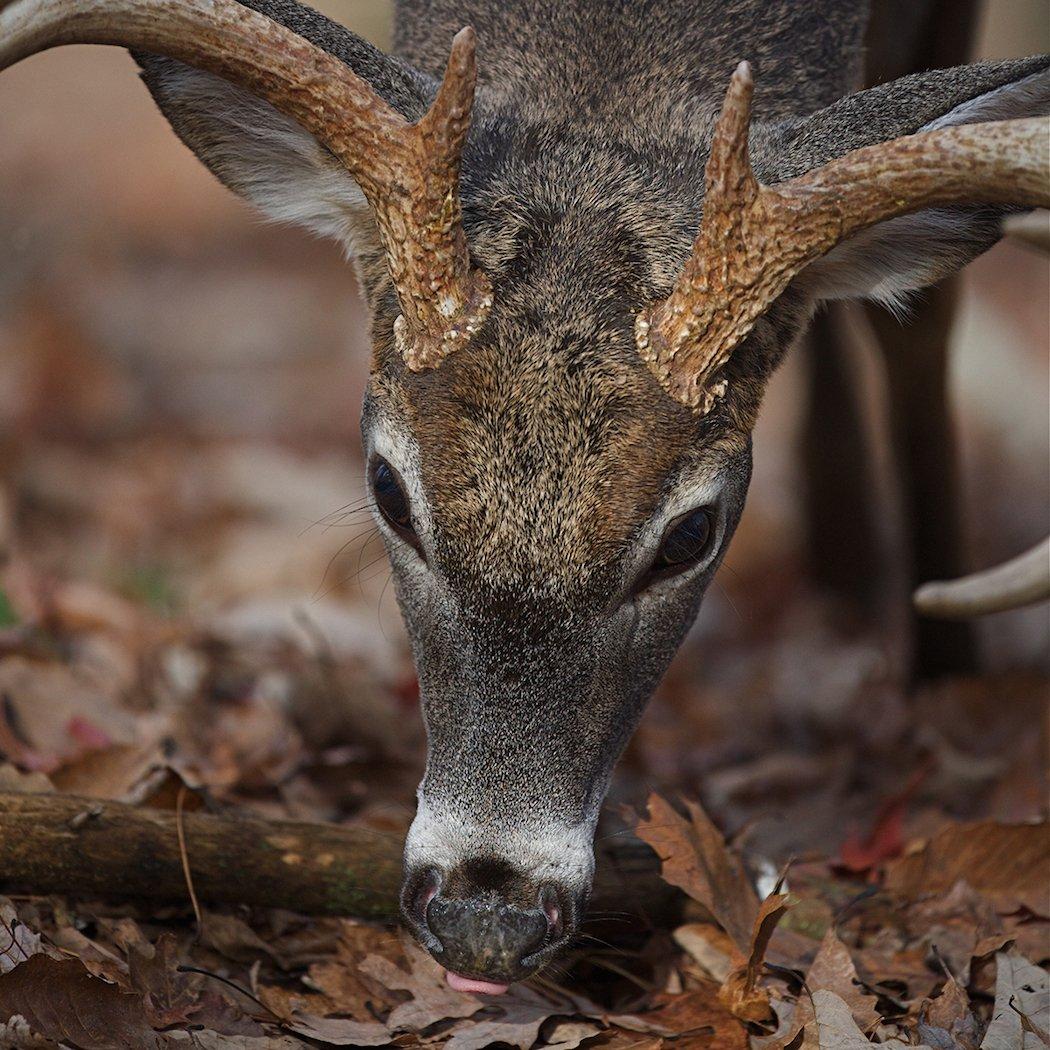Are You in Tune with Big Buck Behavior?
Food is extremely important in deer hunting. Food is at the center of everything — even the rut. It's that important. So when we're trying to stick a big deer, we have to take into account their feeding habits.
1. They Are Concentrate Selectors
This not only applies to big deer but all deer. What this means is deer consume the most nutrient-rich, highly palatable foods they can find. This often means they bite off the top of a plant, tip of a new shoot of grass, or bud on a tree or plant. They generally do not eat the entire plant, just the best part of it. Then, when they've bedded down, they'll regurgitate what they've eaten, chew their cud and digest it further before swallowing it again.
2. Food Drives Everything
Food is king. It's always king no matter the time of the season or year. Everything revolves around it — even bedding areas. Granted, mature deer choose bedding areas based on the security they provide. Bucks will travel great distances to reach a food source. But in areas where deer don't receive as much pressure — golden nuggets of land in the deer world — they give up some of that security to bed closer to food sources. In areas that are pressured, bucks will travel further and you won't ever see them on those major food sources. That means you have to hunt further away from food sources and closer to bedding areas.
3. They Feed in Staging Areas First
I generally don't hunt over major food sources when I'm trying to kill a mature deer that's on my radar. It is possible to catch a careless buck working a big field in daylight. But it's rare. However, it is much more common to see a big deer on its feet in daylight feeding in a staging area. These can be small food plots, pockets of dropped acorns, etc. Find these locations between bedding areas and major food sources. That's the best way to kill a mature buck while it's eating.
4. They Take Meandering Routes to the Dinner Table
Does and young bucks typically take a direct route to the food. They don't take as many precautions as mature bucks. The old ones, they take meandering routes to food sources. They play the wind. They play the thermals. They take travel routes that are strategic for them. In order to understand how this applies to where you hunt, you have to study that place and think like a wary deer.
5. Most Don't Make It to Major Food Sources Until After Dark
As previously mentioned, most mature bucks don't make it to major food sources until after the sun sets. It's a survival tactic. Move less in daylight and run into less hunters. How do we overcome that? Hunt further away from these food sources.
6. They Like Their Salad with Dressing
I've personally noticed that deer — and mature bucks — seem to move more right after a good rain. I don't have any data or science to support why that is. I just know they do. Who knows, maybe they like their salad with dressing.
7. Food Source Preferences Vary
Every buck has a different personality. Therefore, food source preferences will vary from buck to buck. Some bucks prefer beans to corn. Some prefer corn to beans. Some don't prefer either and stick to browse. Every deer is different. Determine what the individual deer you're after prefers by scouting.
8. Deer Take Cuisine Vacations
Recent studies have proven that deer go on excursions. They'll leave their home range and go elsewhere for a period of time. This can range from hours to days. But they take these vacations periodically. Now, I don't know what causes them to do this. No one does. And I'm not suggesting food is the reason. But one thing is for sure, they ain't eatin' at home when they do. They're using food sources they typically don't use. So if the deer you're hunting suddenly disappears, or if you see a new deer for a short period of time, this is likely what happened.
9. Feeding Habits Aren't Really Habits
Deer are very fickle creatures. And food sources are always changing. Because of that, their behavior, bedding areas, and travel routes are always changing, too. You have to stay ahead of them and know what food sources deer will be hitting before they hit them.
10. Deer Eat During the Day
Don't think deer don't move during the day. They do. And bucks don't lay down from dawn to dusk. They get up to feed. They get up to drink. They get up to relieve themselves. However, when mature deer do feed during the day, it's generally within 100 to 150 yards of their bedding area. So if you can find a good food source close to a thick bedding area, you'll be in the money for some action.
Go here to learn about bedding habits of mature deer.
Click here for more deer hunting articles and videos.
Check us out on Facebook.







